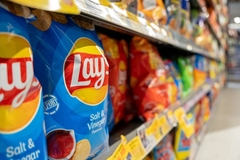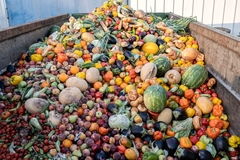Rabobank analysis forecasts “eggflation” to remain high in 2023
11 Apr 2023 --- Research flags that egg prices have reached record levels in several markets and have shaken the global supply chain for many months. While prices may be showing signs of decreasing, Rabobank expects them to remain at relatively high levels throughout 2023, stressing that better cooperation within production chains is needed and better control of bird flu in heavily affected countries.
Avian flu, soaring feed costs and manufacturing prices have caused prices for eggs to lag behind other commodities that are seeing some relief, as commodity prices have declined for the twelfth consecutive month.
Meanwhile, egg prices didn’t start declining until early this year.
Nan-Dirk Mulder, international senior specialist animal proteins at Rabobank, says that the worst of the egg inflation has happened in the US, Europe and Japan, countries that have seen “extreme price spikes.”
The US and the EU are experiencing record prices for eggs, with increases of 155% and 62%, respectively since the first quarter of 2022.
Meanwhile, in Japan, egg prices have reached their highest level since 2003, according to Rabobank, with supermarkets in the country experiencing shortages.
According to Rabobank, egg prices will not decrease significantly in the coming months.

“We don’t expect to see the low price levels we’ve seen after other peak periods. There are a few differences compared to these earlier periods that have a major influence on this,” highlights Mulder.
 More than 100 million birds have been culled globally due to the avian flu.Persistent inflation
More than 100 million birds have been culled globally due to the avian flu.Persistent inflation
Mulder explains that “in the egg sector, price peaks usually lead to comparable price decreases after one to two years.”
This is due to a natural response by manufacturers to periods of higher margins.
“They then usually increase the number of hens to benefit from higher prices, resulting in an oversupply. We saw this trend in 2009 after the German ban on conventional cages, in 2012 after the introduction of the ban on conventional cages in the EU, in 2015 after the AI crisis in the US and in 2017 after the fipronil crisis in the Netherlands,” Mulder continues.
However, while prices will lower significantly in the countries where egg prices have risen the most – like in the US where a dozen of large eggs has gone down from US$5.2 at the start of the year to US$3.13 yesterday, according to USDA data – Rabobank doesn’t expect prices to lower like in other peak periods.
“Prices are expected to remain high in countries with continued avian flu pressures, restrictions on imports of grandparents or breeding stock, limited access to corporate financing or availability of US dollars, and in countries where regulations are changing (such as Germany),” Mulder explains.
“For example, the rapid spread of bird flu in Latin America is currently having a major impact, with prices in countries most affected by the outbreaks rising sharply,” he details.
The causes of egg inflation
According to Rabobank, high global egg prices result from a combination of six supply and demand factors, with some causes being more pressing in some regions.
Rising feed costs, which represent 60-70% of laying hen farmer’s costs and have doubled between mid-2020 and mid-2022.
More than 100 million birds have been culled globally.
The aftermath of COVID-19, which has caused distortions for egg suppliers, is another crucial reason impacting the price spike.
Regulatory moves: The 2022 ban on the culling of day-old roosters in Germany has caused the European country to lose 20% of its hens. Moreover, the introduction of a cage ban for producers in New Zealand has led to a reduction of laying hens in the country of 5-12%.
Consumer behavior changes: Consumers have moved toward cheaper protein sources, leading to increased demand for eggs.
Tight supply: Producer uncertainty due to all the aforementioned reasons has discouraged companies from scaling up their operations. GAIN warns that if poor consumers are forced to move from nutrient-rich foods such as eggs, it will lead to strongly rising hunger and malnutrition rates worldwide.
GAIN warns that if poor consumers are forced to move from nutrient-rich foods such as eggs, it will lead to strongly rising hunger and malnutrition rates worldwide.
Some relief in feed prices is expected, according to Mulder.
“We think feed prices will drop 5-10% in the second half of the year, compared to Q1 level, due to a strong crop outlook for Brazil for corn and soybean, better than expected US wheat crop and better than expected US corn/soybean yield forecast due partly to low fertilizer costs. Moreover, there is an ongoing strong Russian wheat crop and the feed demand globally is weak due to price inflation.”
Nonetheless, the EU might move to implement a ban on chicken cages, following the example of New Zealand, which might propel prices for eggs.
Relief needed
The European Egg Processors Association told FoodIngredientsFirst that the ending of the avian flu and of the War in Ukraine could also be catalyzers toward much needed lower egg prices.
GAIN has warned for over a year now that if poor consumers are forced to move from nutrient-rich foods such as eggs, it will lead to strongly rising hunger and malnutrition rates worldwide.
“There are currently major concerns about the affordability of eggs for low-income consumers, particularly in emerging markets. For these groups, eggs are an important staple food and a source of protein and nutrients such as vitamins B6, B12 and D,” Mulder explains.
“In these markets, eggs are positioned as the most affordable protein and are easy to distribute, as they do not require refrigeration during transport. If eggs become more expensive and less available to these consumers, this could pose major social and health risks,” he concludes.
By Marc Cervera












